| Teamster & BLET Nostalgia |
All items shown are authentic
most items are part of Brother Thomas Felice’s Private Collection
except those listed as "IBT Archives"
|
Bacause of the large amount of pictures additional
Nostalgia Pages have been added
AFTER VIWING THIS PAGE LINK BELOW TO PAGES 2,3, 4, & 5
VIEW MORE AMAZING EARLY TEAMSTER ITEMS
|
CIVIL WAR TEAMSTERS
.
An extremely rare Magic lantern slide, showing seven Teamsters at Bermuda Hundred, Virginia near the signal tower. This glass slide is from the ''Original War Views - 1861-1865'', from the collection of Taylor & Huntington of Hartford, Connecticut, a team of Civil War veterans who published these slides with permission from Mathew Brady and Alexander Gardner to use the original in making it
|
Click thumbnails to view larger image. Note: because of the extraordinary amount of pictures,
please allow extra time for all items to fully load. It will be worth the wait.
|
Teamsters declared by proclamation at the 1916 Convention that the horse would always be the heart of the union and always remain a part of any badge, button, logo or flag
.
Tobin saw that technology was radically changing the freight-moving industry. Recognizing the trend and to motorization as more than a passing fad, he set out to organize the fast growing motorized truck delivery industry. He began by organizing motor truck drivers and prevailed on horse and wagon companies to train their drivers in automotive skills. In 1912, Teamsters were part of the first transcontinental delivery of goods by motor truck. The wave of the future was obvious to even the most die-hard traditionalists, and Teamsters had secured themselves a place as leaders of the transition.
.
For several years, trucks and horses worked some of the same jobs: Teamsters at the reins and at the wheel. Desperate to compete with the new motor carriers, horse-drawn freight firms tried to save money by eliminating feedings for Teamsters horses. Teamsters responded by striking, winning important safeguards for their animals’ well being. As further proof of their devotion to their loyal partners, even amid the many changes, Teamsters declared by proclamation at the 1916 Convention that the horse would always be the heart of the union and always remain a part of any badge, button, logo or flag.
|
Oats and Roses
.
In 1910. Teamsters in Seattle went on strike to protect their partners—the horses who pulled their delivery wagons.
When their employer, the Seattle Transfer Company, tried to stop the horses from having their noon feeding, the Teamsters stopped working in protest. They even filed a complaint with the National Humane Society.
The strike was successful and the horses’ lunch breaks were saved
“According to the men, the company has always put a feed bag in the wagons for the noon ‘lunch’ of the horses. The men claim that the company has now dispensed with the noon feed bag and that the horses are forced to work through the day without feeding. It was for this reason that the men walked out” on strike, according to a Los Angeles Herald report on the incident.
“The claim of the drivers was that to deprive the horses of their noon meal was inhuman,” reported The Labor Digest in January 1911.
.
The Pillars of the Organization: Thunder and Lightning
Since 1910, the Teamsters logo has consisted of two horses’ heads, representing the complimentary forces of strength that are inherent in the Teamsters organization. A well-known emblem, most people recognize it but are unsure of the story behind it. The horses’ names are Thunder and Lightning, Thunder is male, Lightning female. Together, they symbolically represent the pillars of the Teamsters organization: quality and power, dignity and justice, strength and morality.
|
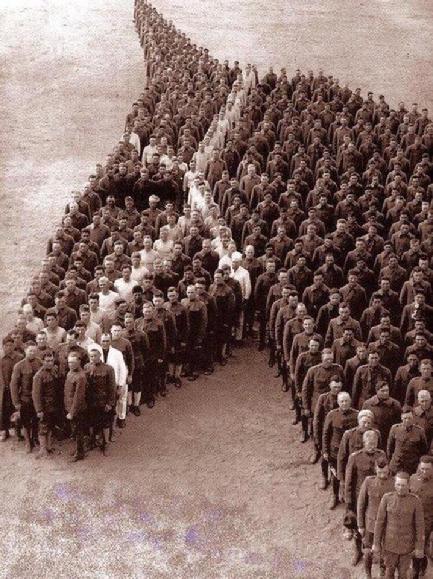 |
| American soldiers paying tribute to all the horses that lost their life in World War I. Circa 1918 Horses.com |
|
|
 |
| Extremely rare “Team Drivers’ International Union of America” envelope post marked December 20, 1903, Local Union No.416 - Philadelphia, PA. The year 1903 was the Same year that this union and the “Teamsters National Union of America” merged to form the international Brotherhood of Teamsters |
|
|
CIVIL WAR ERA GETTYSBURG RELIC-TEAMSTER LEATHER WHIP-15 FEET IN LENGTH WITH 1 1/4" AT THE BASE TO A SINGLE LEATHER STRIP AT THE TIP- SOLID WOOD HANDLE WITH SUPPLE INTERWOVEN LEATHER STRIPS-STRIKING PIECE ACQUIRED IN THE 1960'S FROM THE DUBBIN HOUSE MUSEUM'S GENE PIERPONT COLLECTION OF RELICS PICKED UP AFTER THE BATTLE OF GETTYSBURG BY MANY OF THE LOCALS AND ACQUIRED OVER THE YEARS BY THE MUSEUM AND PIONEER RELIC HUNTER AND COLLECTOR MR. PIERPONT
|
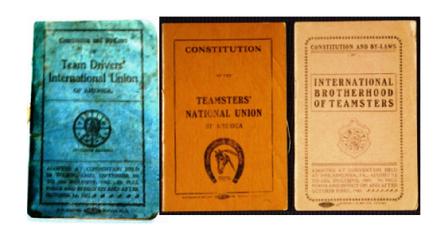 |
| Three extremely rare Constitutions. The blue one is the first Team Driver’s International Constitution, The dark orange one is the Teamsters National Union. The two unions merged to form the International Brotherhood of Teamsters and the light orange one is one of the IBT’s earliest constitution. |
|
|
 |
| "The Pennsylvania Commercial Drivers' Conference" 1941 consisting of 55 Local Unions in PA affiliated with the IBT |
|
|
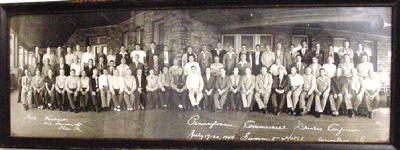 |
| Pennsylvania Commercial Drivers Conference July 17-20, 1944 - Summit Hotel in Uniontown, PA |
|
|
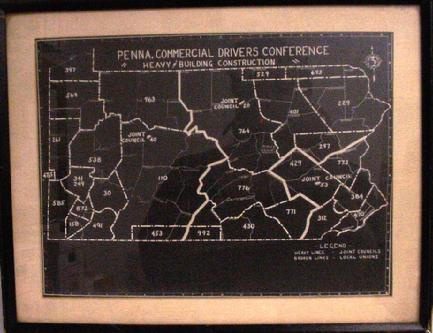 |
| Pennsylvania Commercial Drivers Conference - Heavy Building Construction |
|
|
Pennsylvania Commercial Drivers Conference in 1944 consisted of three PA Joint Councils
Teamsters Joint Council No. 40
Affiliated Local Unions
30, 110, 158, 249, 261, 341, 397, 453, 475, 491, 538, 585, 564, 872, 963
Teamsters Joint Council No. 20
Affiliated Local Unions
229, 297, 401, 430, 529, 693, 764, 771, 776, 992
Teamsters Joint Council No. 53
Affiliated Local Unions
312, 384, 429, 470, 771, 773
|
Cornelius Shea, First General President of the Teamsters
|
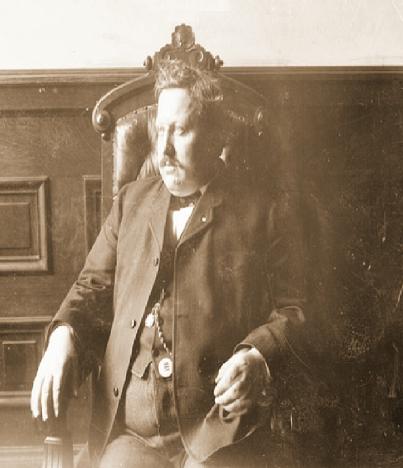 |
| Cornelius Shea, First General President of the Teamsters |
|
|
These items property of the IBT's Archives
|
SCHOOL BUS WAGON DRIVERS 1910
Click photograph below to enlarge
|
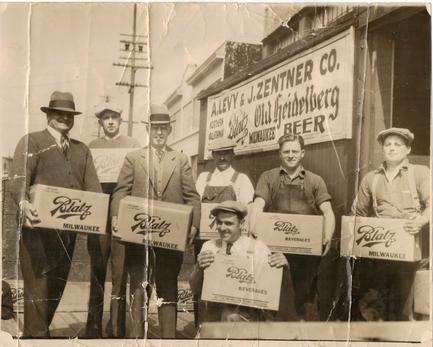 |
| Teamster Jesse Montez who was a Teamster member of Local 588 located in Oakland California |
|
|
These items were acquired through Matt Watts. The items belonged to his grandfather Jesse Montez who was a Teamster member of Local 588 located in Oakland California. Items shown are Brother Montez’s Teamster black leather headgear, bit and binders, Teamster membership card, Teamster withdrawal card and a photo of Brother Montez standing in front of A. Levy & J. Zentner Co. with a gang of Teamsters, and bosses, holding cases of Blatz Beer (the company sold produce in Jack London Square and they were distributors of German Beer as well according to Matt. Brother Montez is in the 2nd row third from the left. In addition to his work as a Teamster he had a ice delivery service.
|
 |
| Early Ice Wagon Drivers & Helper Pin |
|
|
VOCAL RECORDING FROM SERVICEMEN IN WWII PROVIDED BY JC#28
Posted November 12, 1945 Seattle to Teamster member’s family. Contents is a recorded record with a letter from Teamsters Joint Council No. 28 located in Seattle noting that the recording is of their loved one who is serving his country during World War II.
|
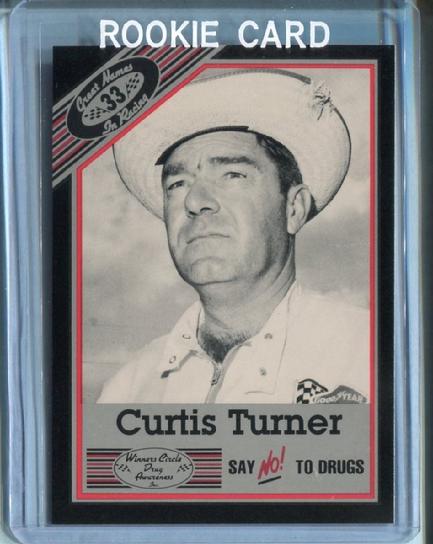 |
| In 1961, Curtis Turner led an effort to unionize the drivers. Backed by the Teamsters Union, the effort was quickly struck down by Bill France, NASCAR founder, who banned Turner, for life from NASCAR (however, he was reinstated in 1964). See his car below |
|
|
 |
| 1995 NASCAR Pontiac Grand Prix driven by Jimmy Hensley and sponsored by Teamsters Local 71 in Charlotte North Carolina-model built by Ed Reichart |
|
|
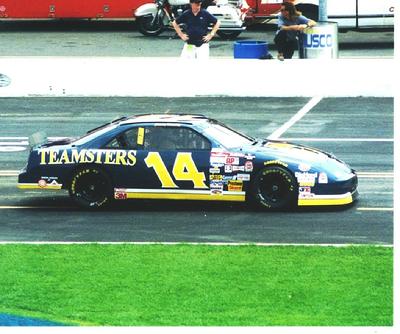 |
| Read about this NASCAR that was sponsored by the Teamsters below |
|
|
Above is an authentic picture of the actual car driven by NASCAR
Jimmy Hensley (1995 Pontiac
Grand Prix No. 14). It was sponsored by Teamsters Local 71 in Charlotte North
Carolina. This picture has been provided by a Teamster Brother from Virginia,
Brother Mark Agee, a 26-year UPS Teamster from Teamsters Local No. 171 in Roanoke, Virginia. (click on picture to view larger image)
|
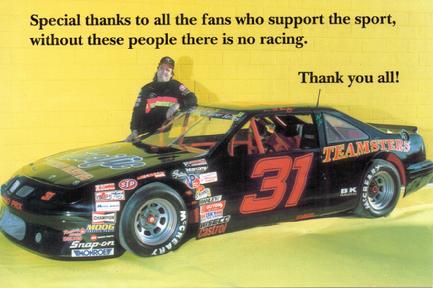 |
| CASCAR-1996 Pontiac Grand Prix driven by Al Gandy-Major sponsors included Teamsters Local 31 B.C. and Teamsters Yukon Local 362 Alberta |
|
|
|
From colonial times to the turn of the last century, the men who drove horse drawn wagons formed the backbone of North America’s wealth and prosperity. Despite their essential role as guardians of trade, the lifeblood of the economy, they remained unorganized and exploited.
In a teamster’s life, work was scarce, jobs were insecure, and poverty was commonplace. In 1900, the typical teamster worked 12 to 18 hours a day, seven days a week for an average wage of $2.00 per day. A teamster was expected not only to haul his load, but to also assume liability for bad accounts and for lost or damaged merchandise.
The work left teamsters assuming all of the risks with little chance for reward.
In 1899, frustrated and angry drivers banded together to form the Team Drivers International Union (TDIU), with an initial membership of 1,700. TDIU's first President was George Innis. In 1902 some members broke away, forming a rival group, the Teamsters National Union. TNU's first president was Albert Young.
Samuel Gompers, leader of the American Federation of Labor (AFL), was concerned by what he saw as a waste of resources and energy, and convinced the competing unions to meet and work out their differences. Agreeing that they were stronger in solidarity than separately, they re-joined forces to create the International Brotherhood of Teamsters (IBT) at a joint convention in Niagara Falls, N.Y. in August 1903. Cornelius Shea was elected its first General President and remained president until August 1907.
Daniel Tobin took over as president on August 10 , 1907 and moved to Indianapolis, Indiana (where the IBT's headquarters were then located.) He faced opposition in 1908, 1909 and 1910. He was re-elected through that three year period and never faced opposition again until his retirement in 1952.
Below are thumbnail pictures of early collectibles from the
Teamsters National Union of America, Team Drivers International
Union and the IBT (Click on pictures to view larger version)
|
Extremely Rare 1809 Team Wagon Driver
Slave Tag
Shown above is a front and back view of an 1809 Chicora Wood Plantation
Team Wagon Driver Slave Tag. It reads, To be in Georgetown at
any hour with Team and Wagon
|
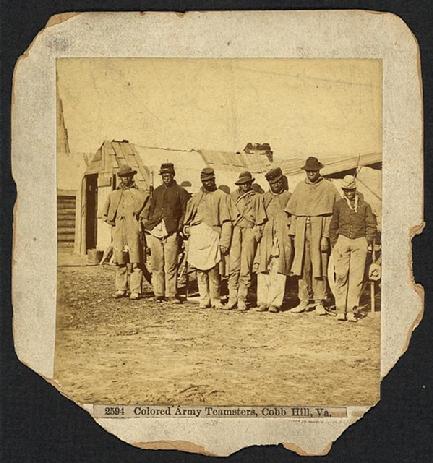 |
| Card:2595 "Colored Army Teamsters, Cobb Hill, VA |
|
|
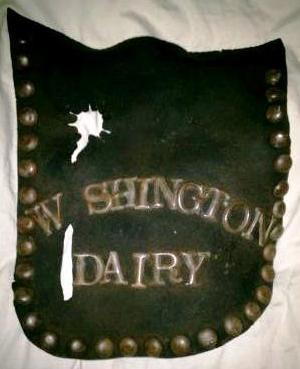 |
| Antique Milk Wagon HorseTack ca 1910 Washington Dairy |
|
|
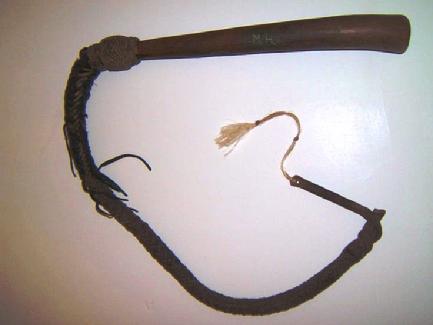 |
| Early Horse Whip Washington Dairy |
|
|
 |
| Early 1900’s Ice Tongs-Teamsters Ice Wagon Drivers |
|
|
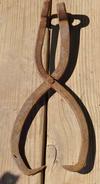 |
| Early 1900’s Ice Tongs-Teamsters Ice Wagon Drivers |
|
|
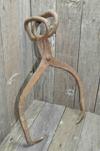 |
| Early 1900’s Ice Tongs-Teamsters Ice Wagon Drivers |
|
|
 |
| Vintage Horse Hames |
|
|
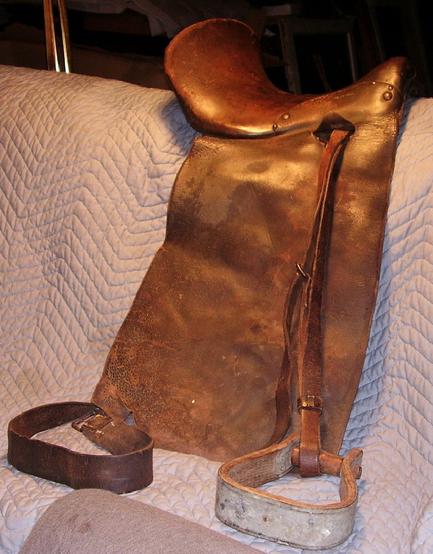 |
| Teamster Wagon Driver’s Saddle Civil War Era |
|
|
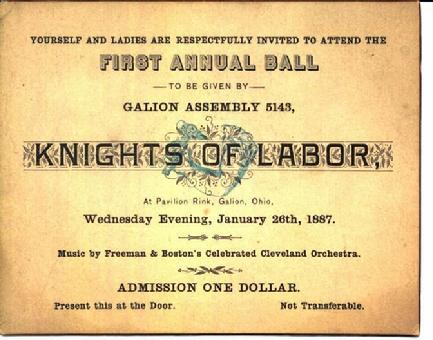 |
| Extremely Rare Knights of Labor 1887 First Annual Ball Ticket |
|
|
 |
| Extremely Rare Knights of Labor Pin |
|
|
 |
| 1906 Teamster Magazine Cover |
|
|
 |
| 1906 Teamster Magazine Back Cover |
|
|
 |
| Inside page listing Cornelius Shea as Gen. President |
|
|
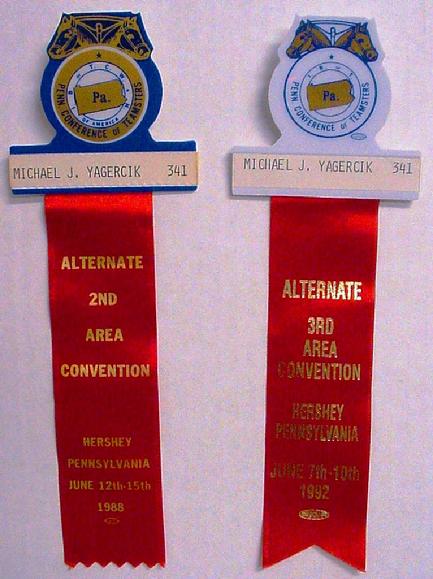 |
| 2nd and 3rd Area Convention of the PA Conference of Teamsters |
|
|
 |
| International Brotherhood of Teamsters First Headquarters Indianapolis, Indiana |
|
|
READ A CONDENSED VERSION OF THE IBT'S HISTORY
CLICK HERE
|
A STEP BACK IN TIME 1972
Hurricane Agnes struck PA from June 21-23, 1972 and dealt
the Commonwealth its most destructive natural disaster
50 deaths and $2.3 billion in damages in Pennsylvania
Click here to view videos and pictures
|
VIEW MORE AMAZING EARLY TEAMSTER ITEMS
|
|